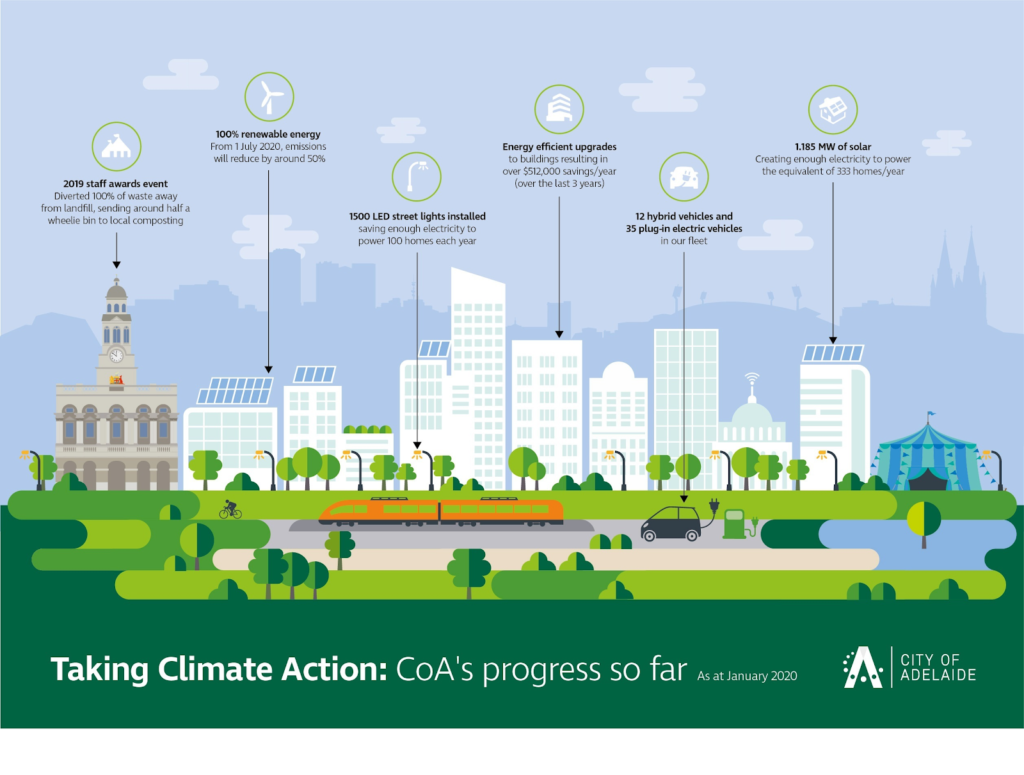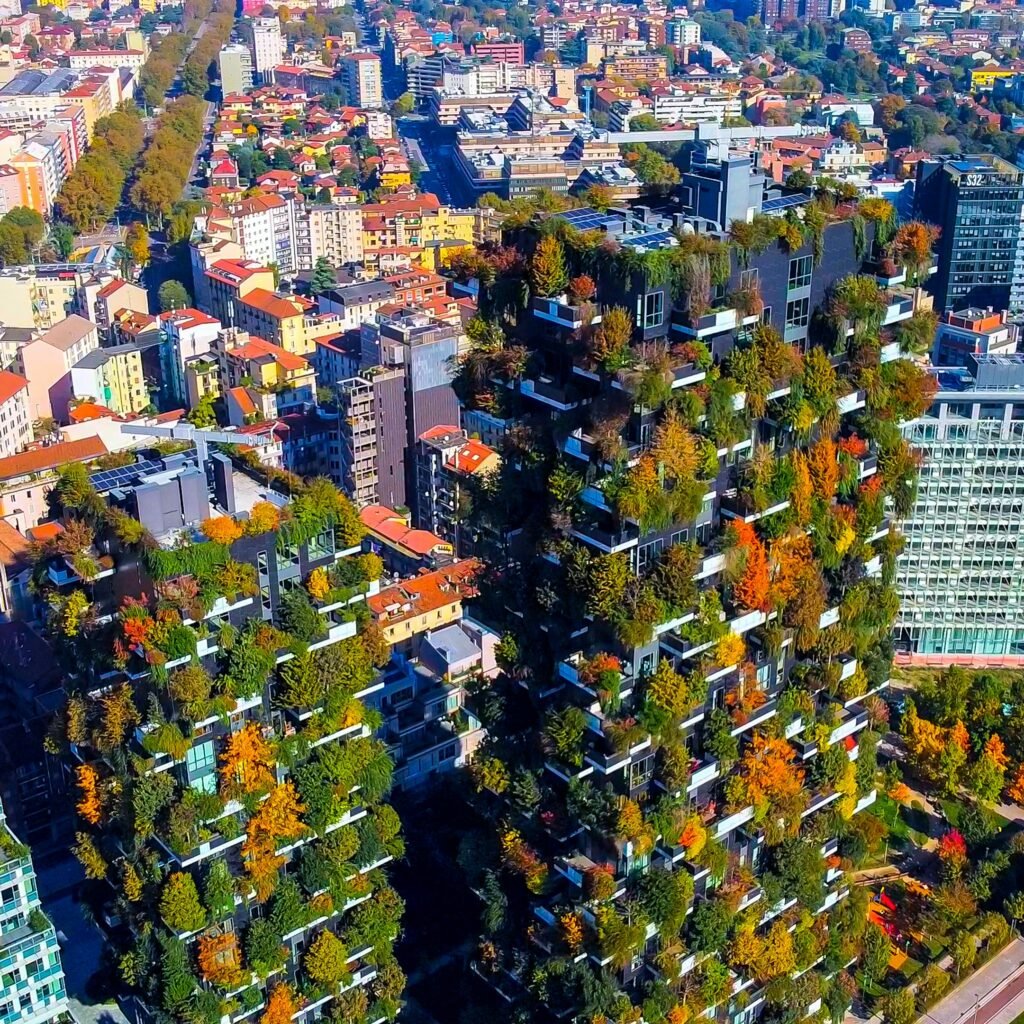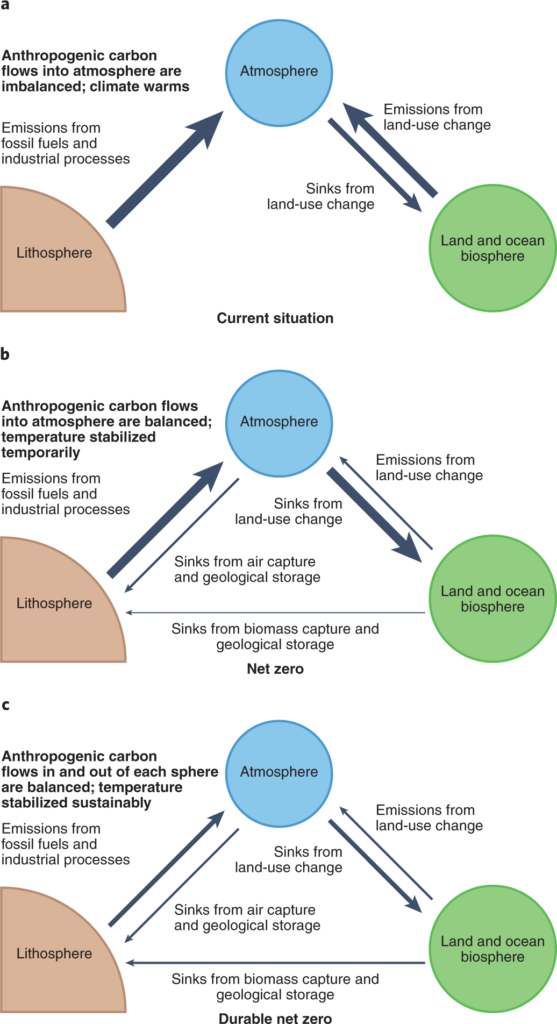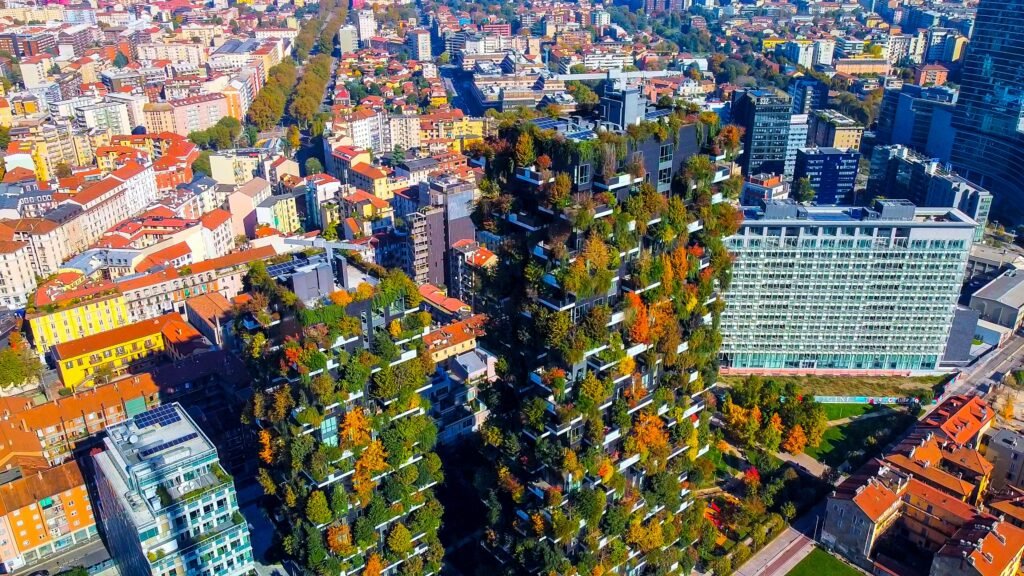In this article, you will learn about the power of zero emission landscaping and how it can contribute to creating a cleaner environment. We will explore the benefits of using electric equipment and sustainable practices in landscaping, such as reducing air and noise pollution, conserving energy, and minimizing carbon emissions. By adopting these eco-friendly methods, you can make a positive impact on the environment and promote a healthier and more sustainable future.

This image is property of www.bhg.com.
What is Zero Emission Landscaping?
The concept of zero emission landscaping
Zero emission landscaping is a sustainable approach to landscaping that aims to minimize or eliminate the use of fossil fuel-powered equipment and reduce the environmental impact of traditional landscaping practices. It involves adopting eco-friendly techniques, materials, and equipment to create and maintain beautiful landscapes without contributing to air and water pollution or greenhouse gas emissions. By implementing zero emission landscaping, you can create a healthier and cleaner environment while still enjoying the beauty and benefits of a well-maintained outdoor space.
Benefits of zero emission landscaping
Zero emission landscaping offers numerous benefits for both the environment and the community. By reducing or eliminating the use of fossil fuel-powered equipment, it helps to reduce air and noise pollution, leading to improved air quality and a quieter neighborhood. Additionally, zero emission landscaping techniques promote the conservation of water resources and protect local ecosystems by utilizing organic fertilizers and pest control methods.
Implementing zero emission landscaping practices also helps to mitigate climate change by reducing greenhouse gas emissions. Traditional landscaping equipment such as gas-powered lawn mowers and leaf blowers emit significant amounts of carbon dioxide and other pollutants into the atmosphere. By switching to zero emission equipment and tools, you can significantly reduce your carbon footprint and contribute to a healthier planet.
Implementing Zero Emission Landscaping
Choosing sustainable materials
One of the first steps in implementing zero emission landscaping is to choose sustainable materials. This includes selecting locally sourced and recycled materials for hardscapes such as pathways, patios, and retaining walls. Utilizing materials that have a low carbon footprint and are renewable or recyclable helps to reduce the overall environmental impact of your landscape.
For example, instead of using concrete for pathways, you can choose permeable pavers or gravel that allows rainwater to infiltrate into the ground. This reduces the amount of runoff and helps to replenish groundwater sources. Similarly, using recycled plastic lumber for decking or fencing not only saves trees but also keeps plastic waste out of landfills.
Utilizing organic fertilizers and pest control methods
Another important aspect of zero emission landscaping is the use of organic fertilizers and pest control methods. Traditional chemical fertilizers and pesticides often contain harmful ingredients that can contaminate soil, water, and harm beneficial insects and wildlife. By choosing organic alternatives, you can maintain a healthy lawn and garden without polluting the environment.
Organic fertilizers, such as compost and manure, provide essential nutrients to plants while improving soil health. They are made from natural ingredients and help to promote the growth of beneficial microorganisms in the soil. Similarly, natural pest control methods, such as companion planting and biological control, help to control pests without the use of harmful chemicals.
Implementing rainwater harvesting systems
Another key element of zero emission landscaping is the implementation of rainwater harvesting systems. These systems collect rainfall from roofs, driveways, and other surfaces and store it for later use in irrigation and other outdoor needs. By capturing and utilizing rainwater, you can reduce your reliance on municipal water sources and conserve this valuable resource.
Rainwater harvesting systems can range from simple rain barrels connected to downspouts to more complex underground cisterns and filtration systems. The collected rainwater can be used to irrigate plants, wash outdoor surfaces, and even flush toilets in some cases. By implementing rainwater harvesting systems, you not only reduce your water consumption but also prevent stormwater runoff and erosion.

This image is property of images.squarespace-cdn.com.
Zero Emission Equipment and Tools
Introduction to zero emission equipment
Zero emission equipment refers to landscaping tools and machinery that run on clean and renewable energy sources, such as electricity or battery power, instead of fossil fuels. These tools produce zero tailpipe emissions, making them environmentally friendly alternatives to their gas-powered counterparts. Examples of zero emission equipment include electric lawn mowers, hedge trimmers, leaf blowers, and chainsaws.
Benefits of using zero emission tools
Using zero emission tools offers several benefits. First and foremost, they eliminate air and noise pollution caused by traditional gas-powered equipment. This is particularly important in residential areas, where noise pollution from landscaping activities can disrupt the peace and tranquility enjoyed by homeowners and their neighbors.
Zero emission tools are also more energy-efficient than gas-powered equipment, as they convert electricity directly into mechanical energy without the energy loss associated with burning fossil fuels. This can result in significant energy savings and lower operating costs over the long term.
Examples of zero emission equipment
There is a wide variety of zero emission equipment available on the market today. Electric lawn mowers, for example, are becoming increasingly popular due to their efficiency and quiet operation. They are available in various sizes and models to suit different lawn sizes and terrains.
Other examples of zero emission equipment include cordless hedge trimmers and leaf blowers. These tools are powered by rechargeable lithium-ion batteries, which provide ample power for typical landscaping tasks without the noise, fumes, and maintenance associated with gas-powered equipment.
Green Waste Management
Effective ways to handle green waste
Proper green waste management is a crucial part of zero emission landscaping. Green waste includes grass clippings, leaves, branches, and other organic materials generated during landscaping activities. Instead of disposing of these materials in landfills, they can be repurposed and recycled to create valuable resources for your garden.
One effective way to handle green waste is through composting. Composting is the natural process of decomposing organic matter into nutrient-rich soil amendment known as compost. By collecting green waste and allowing it to break down in a compost pile or bin, you can create your own compost to enrich the soil and enhance plant growth.
Another option for managing green waste is to mulch it. Mulching involves shredding or chipping organic materials and using them as a protective layer on top of the soil. Mulch helps to retain soil moisture, suppress weeds, and improve soil fertility. It also serves as a natural insulator, regulating soil temperature and providing a habitat for beneficial organisms.
Composting techniques
Composting can be done through various techniques, depending on the amount of space available and the time and effort you are willing to invest. Some common composting methods include:
-
Traditional composting: This involves creating a compost pile or bin in your yard and layering green and brown materials, such as grass clippings, leaves, food scraps, and wood chips. Turning the compost regularly helps to aerate the pile and speed up the decomposition process.
-
Vermicomposting: This method uses worms to accelerate the composting process. Worms, such as red wigglers, feed on organic waste, breaking it down into nutrient-rich vermicompost. Vermicomposting is ideal for those with limited outdoor space or for apartment dwellers, as it can be done indoors using a worm bin.
-
Trench composting: This technique involves burying green waste directly in the garden beds. Dig a trench in your garden and bury the organic waste, covering it with soil. As the waste decomposes, it enriches the soil and provides nutrients to your plants.
Creating a closed loop system
To further enhance green waste management, you can create a closed loop system by recycling the organic materials from your landscape back into the garden. By doing so, you minimize waste, conserve resources, and improve the overall health and fertility of the soil.
For example, instead of bagging grass clippings and sending them to the landfill, consider leaving them on the lawn as natural mulch. Grass clippings break down quickly and release valuable nutrients back into the soil, reducing the need for synthetic fertilizers.
Similarly, fallen leaves can be collected and used as mulch or composted to create leaf mold. Leaf mold is an excellent soil amendment that improves soil structure, retains moisture, and provides essential nutrients to plants.
By implementing these green waste management practices, you can significantly reduce the amount of waste generated from your landscape and create a self-sustaining system that benefits both your garden and the environment.

This image is property of iea.imgix.net.
Native Plant Selection
Importance of native plants in zero emission landscaping
Native plants are species that naturally occur in a particular region and have evolved to thrive in the local climate, soil conditions, and wildlife habitats. Using native plants in zero emission landscaping offers several advantages over non-native or exotic species.
Firstly, native plants are well-adapted to the local environmental conditions and generally require less water, fertilizer, and maintenance compared to non-native plants. They have adapted to the local rainfall patterns, temperature fluctuations, and soil types, making them more resilient and drought-tolerant.
Secondly, native plants provide important habitat and food sources for local wildlife, including birds, butterflies, and pollinators. By incorporating native plants into your landscape, you can help to support biodiversity and create ecological balance in your area.
Benefits of native plants
In addition to their environmental benefits, native plants offer numerous advantages for homeowners and gardeners. Their natural beauty and diversity contribute to a visually appealing landscape design. Native plants come in a wide range of colors, sizes, and textures, allowing you to create a unique and vibrant outdoor space.
Native plants also require less maintenance and are generally more disease and pest-resistant compared to non-native plants. Their adaptation to local conditions reduces the need for pesticides and herbicides, promoting a healthier and safer environment for both humans and wildlife.
Choosing the right native plants for your area
When selecting native plants for your landscape, it is important to choose species that are well-suited to your specific region and site conditions. Consider factors such as soil type, sun exposure, and moisture levels to ensure the success of your native plantings.
Local native plant nurseries and botanical gardens can be valuable resources for information and guidance on selecting suitable native plants. They can provide recommendations based on the specific requirements and characteristics of different native species.
By incorporating native plants into your landscape, you not only create a more sustainable and environmentally friendly outdoor space but also contribute to the preservation of local ecosystems and the biodiversity of your region.
Promoting Biodiversity
Creating habitats for wildlife
Promoting biodiversity is a fundamental aspect of zero emission landscaping. One way to accomplish this is by creating habitats for wildlife in your landscape. By providing food, water, shelter, and breeding areas, you can attract a wide variety of birds, butterflies, insects, and other beneficial wildlife to your garden.
To create wildlife habitats, consider incorporating native plants that produce berries, nectar-rich flowers, and seed sources. These plants provide valuable food sources for birds, bees, and butterflies throughout the year. Additionally, including diverse plant species with different bloom times ensures a continuous supply of flowers and nectar for pollinators.
Water features such as birdbaths, ponds, or small fountains can attract birds and other creatures that rely on water for drinking and bathing. Providing shelter in the form of birdhouses, bat boxes, or brush piles offers nesting sites and protection for wildlife. By creating a diverse and welcoming habitat, you can support a wide range of wildlife species and contribute to the overall health of the ecosystem.
Incorporating pollinator-friendly plants
Pollinators, such as bees, butterflies, and hummingbirds, play a crucial role in the reproduction of plants and the production of food. However, their populations have been declining due to habitat loss, pesticide use, and other factors. By incorporating pollinator-friendly plants into your landscape, you can help reverse this trend and support these important creatures.
Choose native plants that produce nectar-rich flowers in a variety of colors, shapes, and sizes. Different pollinators are attracted to specific flower characteristics, so a diverse selection of plants ensures a more comprehensive pollinator population. Planting in clusters or drifts also makes it easier for pollinators to find and access the flowers.
Avoid using pesticides, particularly insecticides, as they can be harmful to pollinators and other beneficial insects. Instead, embrace natural pest control methods, such as biological control and companion planting, to manage pests without compromising the health of pollinators.
Encouraging natural ecosystems
Incorporating elements of natural ecosystems into your landscape can further promote biodiversity and create a more sustainable environment. Instead of having a perfectly manicured lawn, consider adding meadow areas with native grasses and wildflowers.
Meadows provide valuable habitats for a range of wildlife species and require less maintenance than traditional lawns. They attract pollinators, birds, and other insects, creating a dynamic and thriving ecosystem in your own backyard.
Similarly, incorporating native trees and shrubs in your landscape not only provides food and shelter for wildlife but also contributes to carbon sequestration and the reduction of the urban heat island effect. Native trees are adapted to the local climate and can withstand extreme weather conditions, making them valuable assets in a changing climate.
By encouraging natural ecosystems in your landscape, you not only create a beautiful and diverse outdoor space but also contribute to the overall health and resilience of the environment.

This image is property of media.springernature.com.
Reducing Water Usage
Water-saving techniques for landscapes
Reducing water usage is a crucial aspect of zero emission landscaping, particularly in regions where water scarcity is a concern. By implementing water-saving techniques, you can minimize your landscape’s water requirements and create a more sustainable outdoor environment.
One effective water-saving technique is to group plants with similar water needs together. This allows for more efficient irrigation, as plants with similar moisture requirements can be watered together. Separating plants based on their water needs prevents overwatering and saves water in the long run.
Another water-saving technique is to apply mulch around plants. Mulch helps to suppress weed growth, retain moisture in the soil, and regulate soil temperature. By reducing evaporation and runoff, mulch can significantly reduce water loss and the need for frequent irrigation.
Installing efficient irrigation systems
Installing efficient irrigation systems is another important step in reducing water usage in your landscape. Traditional spray sprinklers often result in water wastage due to evaporation and overspray. Switching to more water-efficient alternatives, such as drip irrigation or micro-sprinklers, can improve irrigation efficiency and reduce water consumption.
Drip irrigation delivers water directly to the root zone of plants, minimizing evaporation and runoff. It also reduces weed growth by applying water only where it is needed, preventing weed seeds from germinating in unplanted areas.
Micro-sprinklers, also known as micro-irrigation or low-volume sprinklers, produce a fine spray or mist that minimizes water loss through evaporation. They can be used to water groundcovers, shrubs, or flower beds, providing efficient and targeted irrigation.
Xeriscaping principles
Xeriscaping is a water-efficient landscaping technique that originated in arid regions but can be applied in any climate. It involves designing and maintaining landscapes with low-water plantings, efficient irrigation systems, and mulching to reduce water usage and create a sustainable and visually appealing outdoor space.
The principles of xeriscaping include proper planning and design, soil improvement, appropriate plant selection, efficient irrigation, and mulching. By using drought-tolerant plants, improving soil quality to enhance moisture retention, and optimizing water delivery through efficient irrigation systems, xeriscapes can thrive with minimal water inputs.
Xeriscaping is not limited to desert-like aesthetics but can be adapted to various styles and preferences. It offers a practical and sustainable solution to water conservation in landscaping, reducing water bills and easing the strain on local water resources.
Educating the Community
Raising awareness about zero emission landscaping
Educating the community about the importance of zero emission landscaping is crucial in promoting sustainable landscaping practices. By spreading awareness, you can inspire individuals and communities to adopt eco-friendly techniques and make a positive impact on the environment.
Organize workshops, presentations, or webinars to educate people about the benefits of zero emission landscaping and provide practical tips on how to implement sustainable practices. Use visual aids, case studies, and success stories to engage and inspire participants. In addition, share information through social media, local newsletters, and community bulletin boards to reach a wider audience.
Engaging local schools and organizations
Engaging local schools and organizations is an effective way to educate and involve the community in zero emission landscaping initiatives. Collaborate with schools to develop educational programs that teach students about the importance of sustainable landscaping practices and offer hands-on experiences in creating and maintaining eco-friendly landscapes.
Partnering with community organizations, such as environmental clubs, gardening societies, or homeowner associations, can also help to spread awareness and promote sustainable landscaping practices. Collaborate on events, projects, or campaigns that encourage individuals and communities to adopt zero emission techniques and share resources and expertise.
Hosting workshops and demonstrations
Hosting workshops and demonstrations is another productive way to educate the community about zero emission landscaping. These events provide opportunities for hands-on learning and allow participants to see sustainable practices in action.
Organize workshops on topics such as composting, rainwater harvesting, native plant selection, or efficient irrigation techniques. Invite local experts, horticulturists, or sustainability professionals to share their knowledge and demonstrate practical techniques. Encourage participants to ask questions, provide resources, and offer follow-up support to ensure the knowledge gained translates into action.
By actively engaging and educating the community, you can inspire individuals to adopt zero emission landscaping practices and create a collective effort towards a cleaner and more sustainable environment.

This image is property of www.bhg.com.
Partnerships and Collaboration
Working with local government agencies
Partnering with local government agencies is essential for promoting and implementing zero emission landscaping initiatives. Government agencies often have resources, expertise, and channels to reach a wider audience and provide financial support for sustainable landscaping projects.
Collaborate with local environmental departments, parks and recreation agencies, or public works departments to develop policies, guidelines, or incentives that encourage zero emission landscaping practices. Advocate for the inclusion of sustainability measures in landscaping regulations and seek support for community projects, education programs, or grants for green infrastructure.
By partnering with local government agencies, you can leverage their resources and influence to accelerate the adoption of zero emission landscaping practices and create a lasting impact on the community and the environment.
Collaborating with landscape professionals
Collaborating with landscape professionals, such as designers, contractors, or maintenance crews, is vital in promoting and implementing zero emission landscaping practices. These professionals play a key role in designing, installing, and maintaining outdoor spaces and can provide valuable insights and expertise in making sustainable choices.
Educate landscape professionals about the benefits of zero emission landscaping and share information on best practices, sustainable materials, and zero emission equipment. Offer workshops or training sessions to help them acquire the knowledge and skills needed to incorporate sustainable techniques into their work.
By collaborating with landscape professionals, you can influence industry standards and practices, encouraging a shift towards more sustainable and environmentally friendly approaches.
Joining environmental organizations
Joining and supporting environmental organizations and initiatives is another way to promote and advance zero emission landscaping practices. Environmental organizations often advocate for sustainable practices and provide resources, networking opportunities, and platforms for sharing knowledge and experiences.
Identify and join local and national organizations that focus on sustainable landscaping, conservation, or environmental stewardship. Participate in their events, support their initiatives, and contribute your expertise to the cause. By working together with like-minded individuals and organizations, you can amplify your impact and create a stronger voice for zero emission landscaping.
Evaluating the Environmental Impact
Measuring the carbon footprint of landscaping activities
Measuring the carbon footprint of landscaping activities is an important step in evaluating the environmental impact and progress of zero emission landscaping initiatives. By quantifying greenhouse gas emissions, you can identify areas for improvement and track the effectiveness of your sustainability efforts.
Calculate the carbon footprint of landscaping activities by considering factors such as fuel consumption, electricity usage, and the embodied carbon in materials. This can be done using various tools and methodologies available, such as carbon calculators or life cycle assessment methods.
Monitoring and analyzing the carbon footprint of your landscaping activities can help prioritize actions, set reduction targets, and identify opportunities for improvement. It also provides valuable data for reporting and communication purposes, demonstrating the positive environmental outcomes achieved through zero emission landscaping.
Assessing the reduction in emissions
Assessing the reduction in emissions resulting from zero emission landscaping practices is essential for evaluating the success and impact of sustainable landscaping initiatives. By comparing the emissions generated before and after the adoption of zero emission techniques, you can quantify the environmental benefits achieved.
Evaluate the reduction in emissions by considering factors such as the switch to zero emission equipment, the use of organic fertilizers and pest control methods, and the implementation of water-saving techniques. Use data from fuel consumption, energy usage, and water consumption to estimate the reduction in greenhouse gas emissions and other pollutants.
Monitoring and assessing the reduction in emissions helps to validate the effectiveness of zero emission landscaping practices and provides the necessary evidence to demonstrate the environmental benefits to stakeholders and the wider community.
Tracking progress and improvements
Tracking the progress and improvements resulting from zero emission landscaping initiatives is crucial for maintaining momentum and making further enhancements. Regular monitoring and evaluation can help identify areas where objectives are being met and areas where additional efforts are required.
Establish key performance indicators (KPIs) and create a system for tracking progress over time. This can include metrics such as the percentage of zero emission equipment used, water savings achieved, waste reduction targets, or biodiversity indicators.
Regularly review the data, analyze the results, and make adjustments as needed. Celebrate successes, share lessons learned, and communicate the progress to stakeholders and the community. By continuously monitoring and improving, you can ensure the long-term success and sustainability of your zero emission landscaping initiatives.
Economic Benefits of Zero Emission Landscaping
Cost savings through sustainable practices
Adopting zero emission landscaping practices can lead to cost savings over the long term. While the initial investment may be higher compared to conventional landscaping methods, the reduced operating costs and maintenance requirements can result in significant financial benefits.
For example, switching to zero emission equipment eliminates the need for purchasing and storing gasoline or diesel fuel, reducing fuel costs. Additionally, zero emission tools typically have fewer moving parts and require less maintenance than gas-powered equipment, resulting in lower repair and replacement costs.
Furthermore, implementing water-saving techniques, such as efficient irrigation systems and mulching, reduces water consumption and lowers water bills. Conserving water also helps to reduce the strain on local water resources and may make you eligible for rebates or incentives offered by water utility companies.
Job creation in the green landscaping industry
The transition to zero emission landscaping practices can create job opportunities in the green landscaping industry. As the demand for sustainable landscaping services increases, there is a growing need for skilled professionals who can design, install, and maintain environmentally friendly outdoor spaces.
Green landscaping jobs can range from landscape designers and technicians specializing in sustainable practices to irrigation specialists and organic gardening experts. These jobs not only contribute to the local economy but also offer rewarding career paths for individuals passionate about creating a cleaner and more sustainable environment.
Attracting eco-conscious customers
Adopting zero emission landscaping practices can also attract eco-conscious customers who value sustainability and environmental responsibility. As more individuals become aware of the environmental impact of landscaping activities, they are seeking landscape professionals and businesses that align with their values.
By promoting your zero emission practices and sustainable landscaping expertise, you can differentiate yourself in the market and attract customers who are willing to pay a premium for environmentally friendly services. This can result in increased business opportunities, customer loyalty, and a positive reputation in the community.
By showcasing the economic benefits of zero emission landscaping, you can encourage more individuals and businesses to embrace sustainable practices and contribute to a cleaner and greener future.
Challenges and Solutions
Overcoming resistance to change
One of the main challenges in adopting zero emission landscaping practices is overcoming resistance to change. Some individuals may be reluctant to switch from familiar and conventional methods to sustainable alternatives due to various reasons, such as concerns about effectiveness, cost, or inconvenience.
To address this challenge, education and awareness campaigns play a vital role in highlighting the benefits and dispelling misconceptions about zero emission landscaping. Share success stories, case studies, and testimonials from those who have already adopted sustainable practices to demonstrate their effectiveness and positive outcomes.
Offer practical guidance and support to those who are interested in transitioning to zero emission landscaping. Provide resources, training, or workshops to help individuals navigate the process and overcome common obstacles. By addressing concerns and providing the necessary tools, you can encourage more people to embrace sustainable practices.
Finding sustainable alternatives to conventional landscaping methods
Another challenge in implementing zero emission landscaping is finding sustainable alternatives to conventional landscaping methods and materials. Traditional practices, such as the use of chemical fertilizers, pesticides, and water-intensive turf grass lawns, may be deeply ingrained in landscaping habits and require significant changes to overcome.
Seek out sustainable alternatives that are effective and environmentally friendly. Explore organic fertilizers and pest control methods that provide the necessary nutrients and protection for plants without harming the environment. Consider native plant alternatives to traditional turf grass lawns that require less water and maintenance.
Collaborate with local suppliers, utility companies, and environmental organizations to identify and promote sustainable materials and resources. Research new technologies and innovations in the landscaping industry that offer improved sustainability, such as robotic mowers or smart irrigation systems.
Addressing budget limitations
Budget limitations can also pose a challenge when implementing zero emission landscaping practices. The upfront costs of transitioning to zero emission equipment or renovating landscapes to incorporate sustainable features may be perceived as barriers for some individuals or organizations.
To overcome this challenge, emphasize the long-term cost savings and environmental benefits associated with sustainable practices. Highlight the potential return on investment from reduced operating costs, maintenance requirements, and higher property values.
Explore financing options, rebates, or incentives offered by government agencies, utility companies, or environmental organizations to assist with the transition to sustainable landscaping practices. Additionally, consider phased or incremental approaches, implementing sustainable practices over time as budget allows.
By addressing budget limitations and providing practical solutions, more individuals and organizations can embrace zero emission landscaping practices, contributing to a cleaner environment.
Success Stories: Zero Emission Landscaping Projects
Case studies of successful zero emission landscaping projects
Numerous success stories of zero emission landscaping projects showcase the positive impact of sustainable practices on the environment, communities, and individuals. These case studies demonstrate that implementing zero emission landscaping is not only feasible but also financially and environmentally rewarding.
One such case study is the transformation of a public park in a major city into a zero emission landscape. By replacing gas-powered equipment with electric and battery-powered alternatives, the park significantly reduced noise and air pollution while maintaining a well-groomed appearance. The transition also resulted in cost savings and improved employee satisfaction.
Another success story comes from a residential community that replaced traditional turf grass lawns with native plantings. The switch reduced water consumption, minimized the use of synthetic fertilizers and pesticides, and attracted a diverse range of wildlife. The residents now enjoy a low-maintenance and environmentally friendly landscape that enhances the beauty and value of their properties.
Lessons learned and replicable practices
Successful zero emission landscaping projects provide valuable lessons and replicable practices for others looking to adopt sustainable practices. These projects showcase the benefits, challenges, and solutions involved in transitioning to zero emission landscaping.
Some key lessons learned from these projects include the importance of community engagement and education, the need for partnerships and collaboration, and the value of ongoing monitoring and evaluation. Successful projects often emphasize the role of leadership, communication, and long-term commitment in achieving sustainable outcomes.
Replicable practices from successful projects include the installation of rainwater harvesting systems, the use of native plants for water-wise landscaping, and the adoption of zero emission equipment for maintenance and operations. These practices have proven to be effective in reducing water consumption, conserving resources, and minimizing environmental impact.
By sharing and replicating these successes, more individuals, communities, and organizations can be inspired to embrace zero emission landscaping and contribute to a cleaner environment.
Impact on the environment and community
Successful zero emission landscaping projects have a positive impact not only on the environment but also on the community as a whole. These projects contribute to improved air and water quality, reduced carbon emissions, and the conservation of natural resources.
Additionally, zero emission landscaping projects enhance the aesthetic appeal of outdoor spaces, creating beautiful and inviting landscapes that improve the quality of life for residents and visitors. The incorporation of native plants, wildlife habitats, and natural ecosystems promotes biodiversity, supports local wildlife populations, and creates opportunities for educational and recreational activities.
Successful projects also inspire and educate the community about sustainable landscaping practices, encouraging more individuals and organizations to adopt similar initiatives. The collective efforts of these projects contribute to a broader movement towards a greener and more sustainable future.
Conclusion
“Create a Cleaner Environment: The Power of Zero Emission Landscaping” highlights the importance and benefits of adopting sustainable practices in landscaping. By implementing zero emission landscaping techniques, such as choosing sustainable materials, utilizing organic fertilizers, and incorporating rainwater harvesting systems, you can significantly reduce the environmental impact of your outdoor space.
Zero emission equipment and tools provide a cleaner and quieter alternative to traditional gas-powered equipment, while green waste management practices minimize waste and contribute to a closed loop system. Native plant selection, promoting biodiversity, and reducing water usage further enhance the sustainability of your landscape.
Educating the community, partnerships and collaborations, and evaluating the environmental impact are crucial in spreading awareness and achieving long-term success. The economic benefits, challenges, and solutions associated with zero emission landscaping demonstrate the viability and value of sustainable practices.
By sharing success stories, lessons learned, and replicable practices, more individuals and communities can be empowered to adopt zero emission landscaping and contribute to a cleaner and healthier environment. The power of zero emission landscaping lies in its ability to create beautiful and sustainable outdoor spaces while preserving and enhancing the natural world around us.





